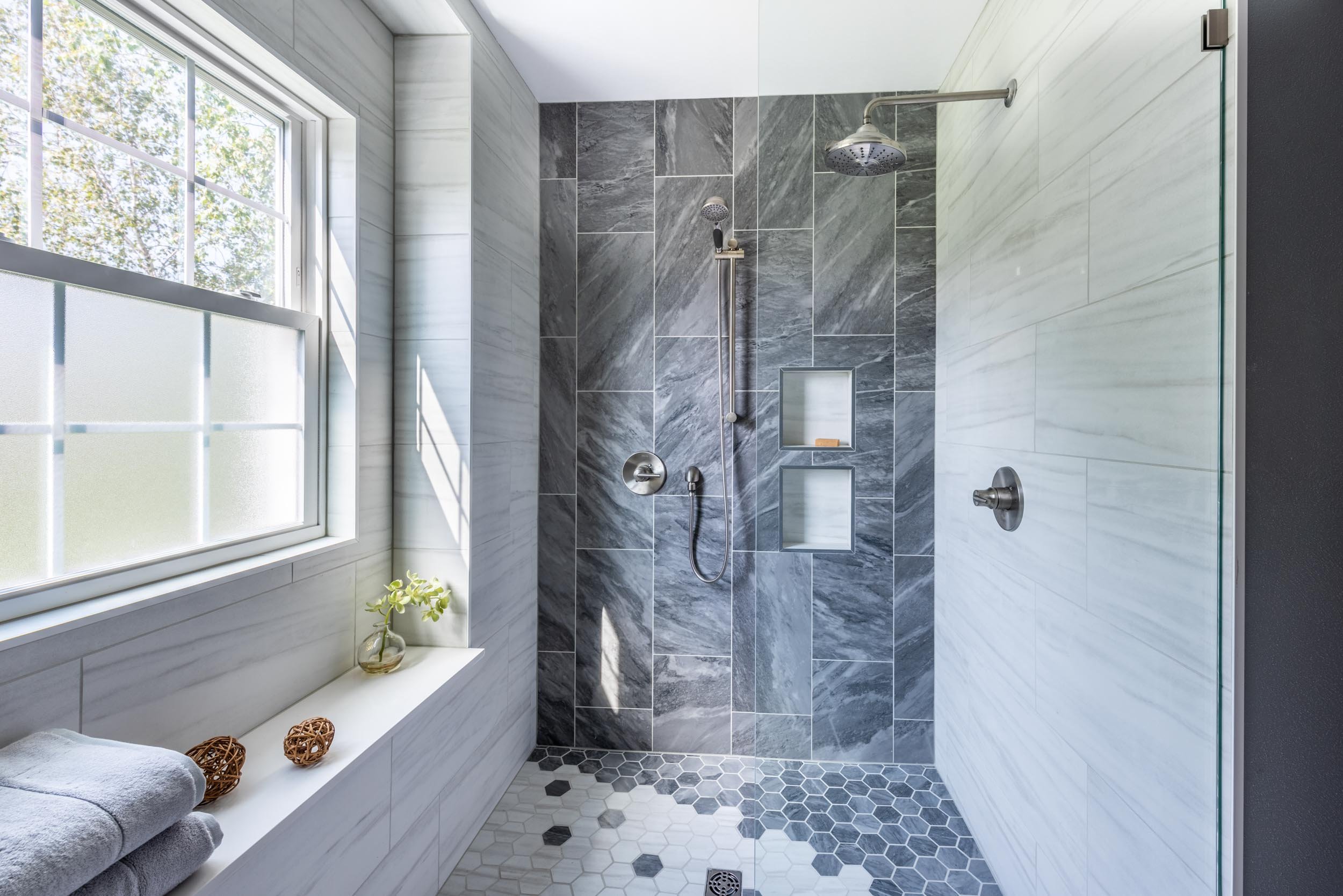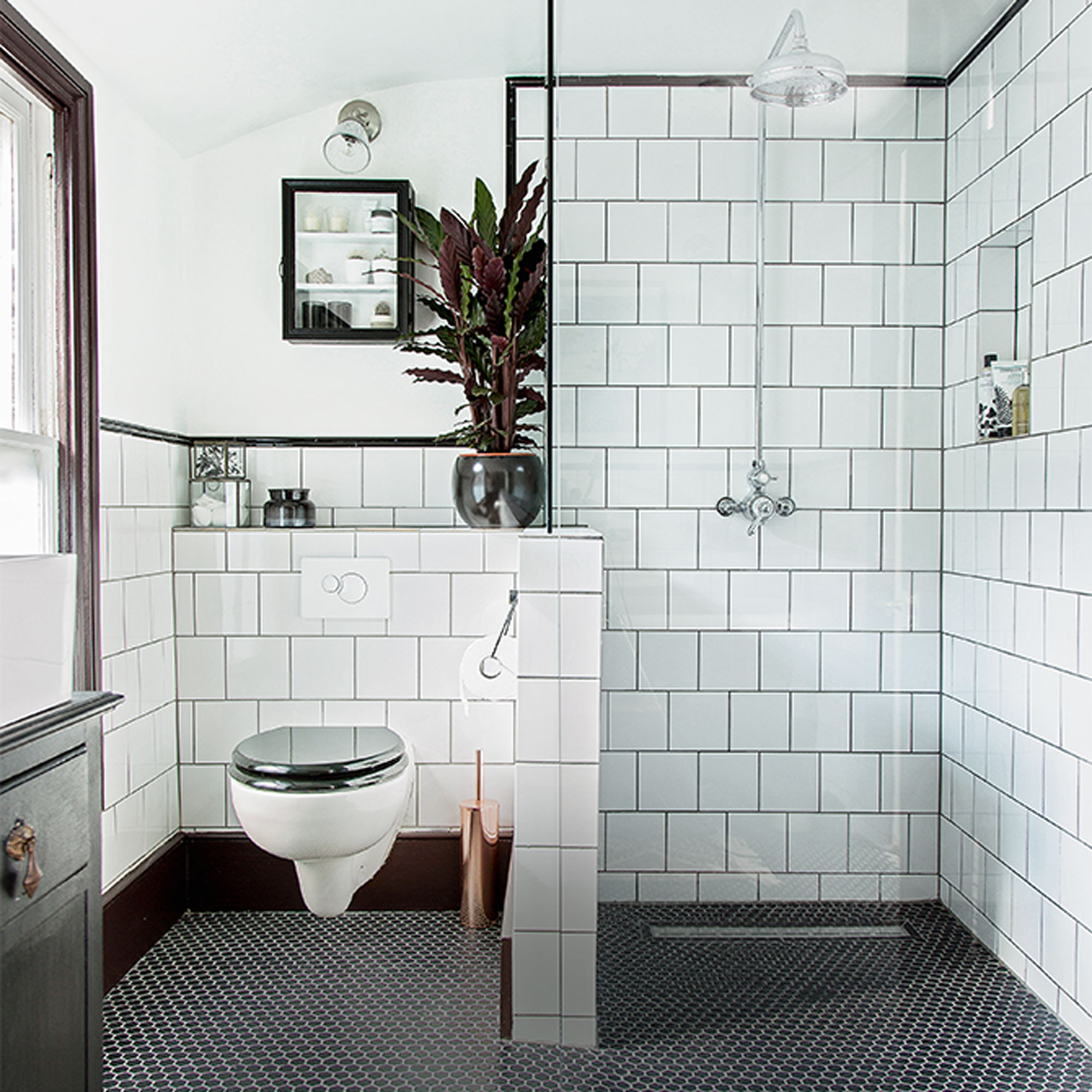Types of Open Shower Designs
Open shower designs are becoming increasingly popular, offering a sense of spaciousness and modern elegance to bathrooms. They seamlessly blend the shower area with the rest of the bathroom, creating a unified and visually appealing space.
Walk-in Showers
Walk-in showers are a popular choice for open shower designs, as they eliminate the need for a traditional shower door or curtain. These showers feature a curbless entry, allowing easy access for people of all ages and abilities. They are typically designed with a tiled floor that slopes gently towards a drain, ensuring proper water drainage.
Frameless Glass Enclosures
Frameless glass enclosures provide a sleek and modern look while still offering a degree of privacy. These enclosures use thick glass panels that are mounted directly to the wall or ceiling, creating a minimalist and visually appealing design. They are often used in conjunction with a walk-in shower, providing a barrier against water splashes while maintaining an open feel.
Open-Concept Shower Stalls
Open-concept shower stalls offer a completely open and unobstructed showering experience. These showers are typically designed with a tiled floor and walls, and they may feature a decorative tile pattern or mosaic to add visual interest. Open-concept showers are ideal for smaller bathrooms, as they can help to create a sense of spaciousness.
Materials Used for Open Shower Construction
Open showers can be constructed using a variety of materials, each offering unique aesthetic and functional qualities.
- Tile: Tile is a versatile and durable material that is commonly used for open shower construction. It comes in a wide range of colors, patterns, and textures, allowing for customization to match any bathroom design.
- Stone: Natural stone, such as marble, granite, and slate, adds a touch of luxury and sophistication to open showers. It is a durable and water-resistant material that can withstand the rigors of daily use.
- Glass: Glass is often used for shower enclosures and partitions, providing a sleek and modern look. Tempered glass is commonly used for shower enclosures, as it is strong and shatter-resistant.
Design Tips for Incorporating Open Showers
Here are some design tips for incorporating open showers into various bathroom layouts:
- Consider the Bathroom Layout: Open showers work best in bathrooms with ample space. If you have a smaller bathroom, consider using a walk-in shower or a frameless glass enclosure to maximize space.
- Choose the Right Materials: The materials you choose for your open shower will impact its overall look and feel. Consider the style of your bathroom and the level of maintenance you are willing to undertake.
- Ensure Proper Drainage: Proper drainage is essential for open showers to prevent water from pooling on the floor. Make sure to install a drain that is large enough to handle the water flow.
- Consider Lighting: Good lighting is essential for any bathroom, but it is especially important for open showers. Consider using a combination of natural and artificial light to create a bright and inviting space.
- Add Storage: Open showers can often lack storage space. Consider adding shelves, niches, or a built-in bench to provide storage for toiletries and other bathroom essentials.
Open Shower Benefits and Considerations

Open showers are a popular choice for modern bathrooms, offering a sense of spaciousness and luxury. They can be designed in various ways to fit different styles and preferences, but it’s important to consider both the advantages and potential drawbacks before making a decision.
Advantages of Open Showers
Open showers offer several advantages that can significantly enhance the bathroom experience.
- Spacious and Luxurious Feel: Open showers create a sense of openness and grandeur, making the bathroom feel larger and more inviting. The absence of walls and doors allows for a more expansive view, particularly in smaller bathrooms.
- Enhanced Natural Light: By removing walls, open showers allow natural light to penetrate the bathroom more effectively, creating a brighter and more airy atmosphere. This can be especially beneficial in bathrooms with limited natural light.
- Improved Accessibility: Open showers are generally easier to access and navigate, making them ideal for people with mobility challenges. The lack of a shower door eliminates the need to step over a threshold, reducing the risk of tripping or falling.
- Increased Ventilation: Open showers promote better ventilation, reducing the buildup of moisture and steam. This can help prevent mold and mildew growth, creating a healthier and more pleasant bathroom environment.
Drawbacks of Open Showers, Open shower bathroom designs
While open showers offer several benefits, they also come with some potential drawbacks that should be carefully considered.
- Water Splatter: Without a shower door or enclosure, water can easily splatter outside the shower area, potentially wetting the floor and surrounding surfaces. This can create a safety hazard and require more frequent cleaning.
- Privacy Concerns: Open showers may not offer the same level of privacy as enclosed showers, especially in smaller bathrooms or shared spaces. This can be a concern for some individuals, particularly if they prefer more privacy during their shower routine.
- Maintenance Issues: Open showers can be more challenging to maintain than enclosed showers. The absence of a door or enclosure makes it more difficult to contain water and debris, potentially leading to more frequent cleaning and maintenance.
Mitigating Drawbacks of Open Showers
Several design choices and installation techniques can help mitigate the potential drawbacks of open showers.
- Strategic Placement: Carefully consider the placement of the showerhead and the overall layout to minimize water splatter. Positioning the showerhead close to the wall and using a low-flow showerhead can significantly reduce the amount of water that escapes the shower area.
- Sloped Flooring: Incorporating a slight slope in the shower floor can direct water towards the drain, preventing it from pooling on the floor and reducing the risk of slipping.
- Glass Partitions: Installing glass partitions or panels can provide a degree of privacy and containment without completely enclosing the shower. These partitions can be designed in various styles and configurations to suit different preferences.
- Proper Grouting and Sealing: Thoroughly grouting and sealing all joints and seams in the shower area is essential to prevent water from penetrating the underlying structure and causing damage.
- Regular Cleaning and Maintenance: Regular cleaning and maintenance are crucial for maintaining the cleanliness and functionality of an open shower. This includes cleaning the showerhead, removing debris from the drain, and sealing any cracks or gaps.
Open Shower Design Elements: Open Shower Bathroom Designs

An open shower is a beautiful and functional addition to any bathroom, but it’s the design elements that truly elevate the experience. From the showerhead to the storage solutions, every detail contributes to the overall aesthetic and functionality.
Showerhead Selection
Choosing the right showerhead is crucial for an open shower, as it impacts the flow rate, spray patterns, and design aesthetics.
- Flow Rate: Consider the water pressure and flow rate of the showerhead. A higher flow rate can create a more luxurious experience, but it may also lead to higher water bills. Choose a showerhead with a flow rate that balances your desired experience with water conservation.
- Spray Patterns: Explore different spray patterns, such as rain, massage, or cascading, to create a personalized shower experience. Some showerheads offer multiple spray settings, allowing you to switch between different options depending on your preference.
- Design Aesthetics: The showerhead should complement the overall design of the open shower. Choose a style that aligns with the bathroom’s aesthetic, whether it’s modern, minimalist, or traditional.
